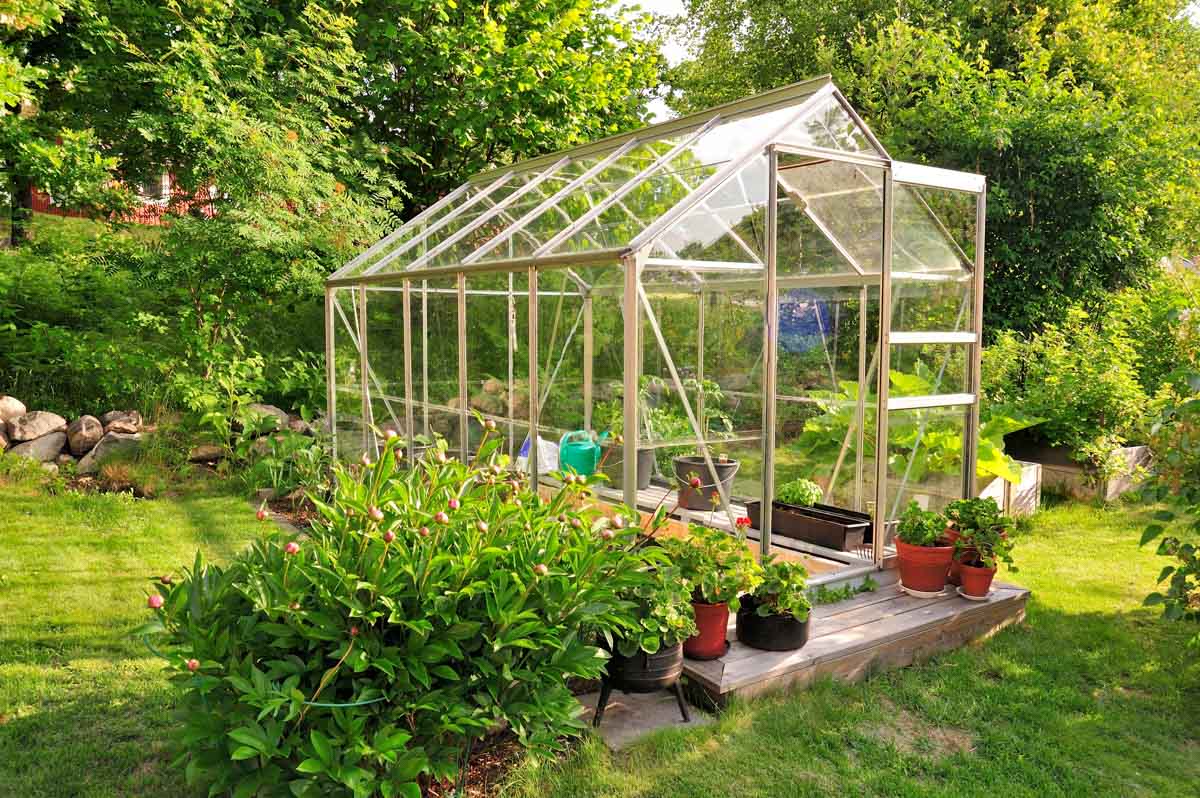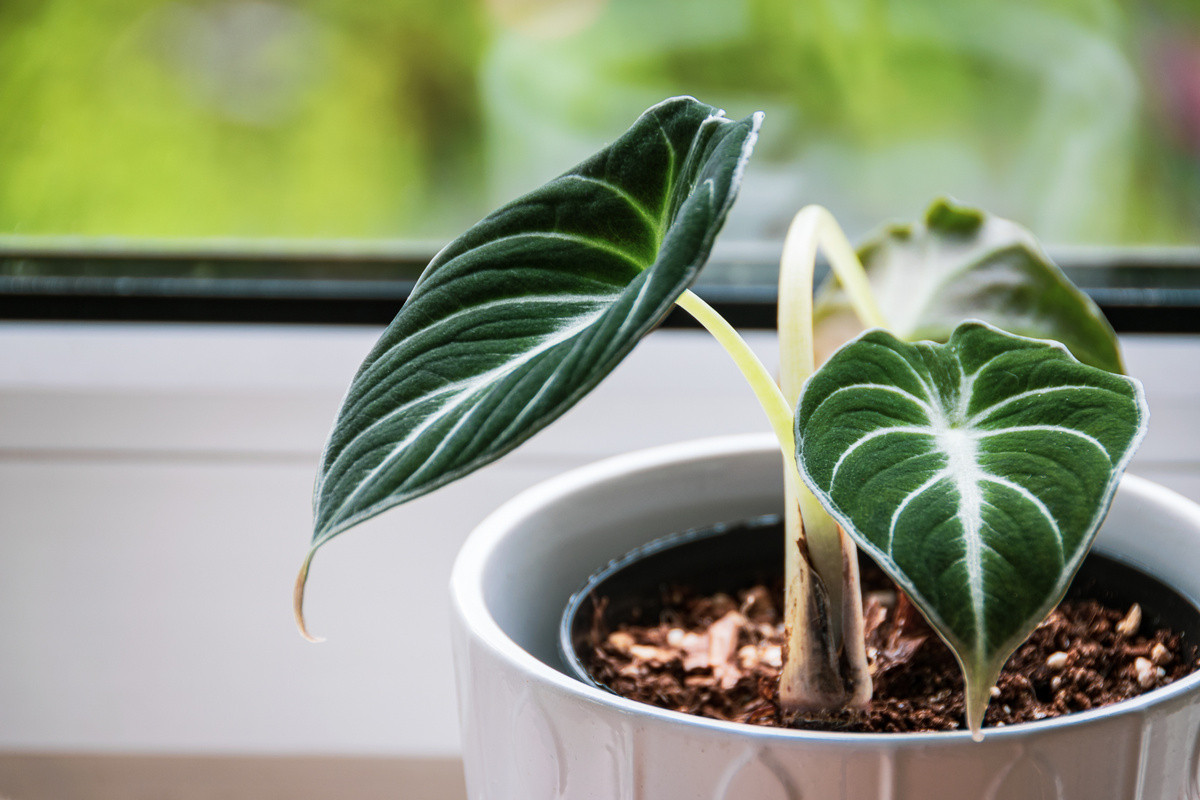Greenhouses offer a unique, controlled environment where gardeners can grow plants all year round, regardless of the weather conditions outside. They protect fragile seedlings from harsh winds, insulate delicate flowers from temperature swings, and provide an ideal space for nurturing countless varieties of fruits and vegetables. However, maintaining a greenhouse is not just about having the right lighting or temperature control—it also involves ongoing cleaning and upkeep. You might be wondering: why is it important to keep the greenhouse clean, and what does a “clean greenhouse” really entail?
In this comprehensive guide, we’ll walk you through everything you need to know about maintaining a pristine greenhouse environment. Specifically, we’ll explore ten crucial benefits of regular greenhouse cleaning, ranging from preventing pest infestations to improving overall plant health. We’ll also share best practices for maintaining a clean greenhouse, identify the common mistakes gardeners should avoid, and highlight how you can effectively set up a cleaning routine. By the end of this article, you’ll have a clear sense of the long-term advantages that a tidy greenhouse can bring to you and your plants.
Greenhouse gardening is a labor of love that promises bountiful harvests and stunning blooms. But often, the focus on planting, pruning, and harvesting can overshadow an essential aspect of greenhouse care: cleaning. It’s easy to neglect, especially when time is limited and you’re juggling various gardening tasks. Yet, greenhouse cleanliness is far from a trivial detail. It affects your plants’ health, the greenhouse structure itself, and even your overall gardening costs.
If you’ve ever asked yourself, “why is it important to keep the greenhouse clean”, consider the crucial role cleanliness plays in pest control, disease prevention, and plant vitality. In this article, we’ll delve into the top ten benefits of a clean greenhouse, shedding light on how maintaining a tidy environment can make or break your gardening success. In addition, we’ll share best practices for cleaning, common pitfalls to avoid, and a step-by-step outline for building a practical cleaning schedule. Whether you’re a seasoned greenhouse enthusiast or just getting started, a consistent cleaning routine will help you maximize your yields, reduce plant loss, and enjoy a more manageable, sustainable greenhouse.
Understanding Greenhouse Cleanliness
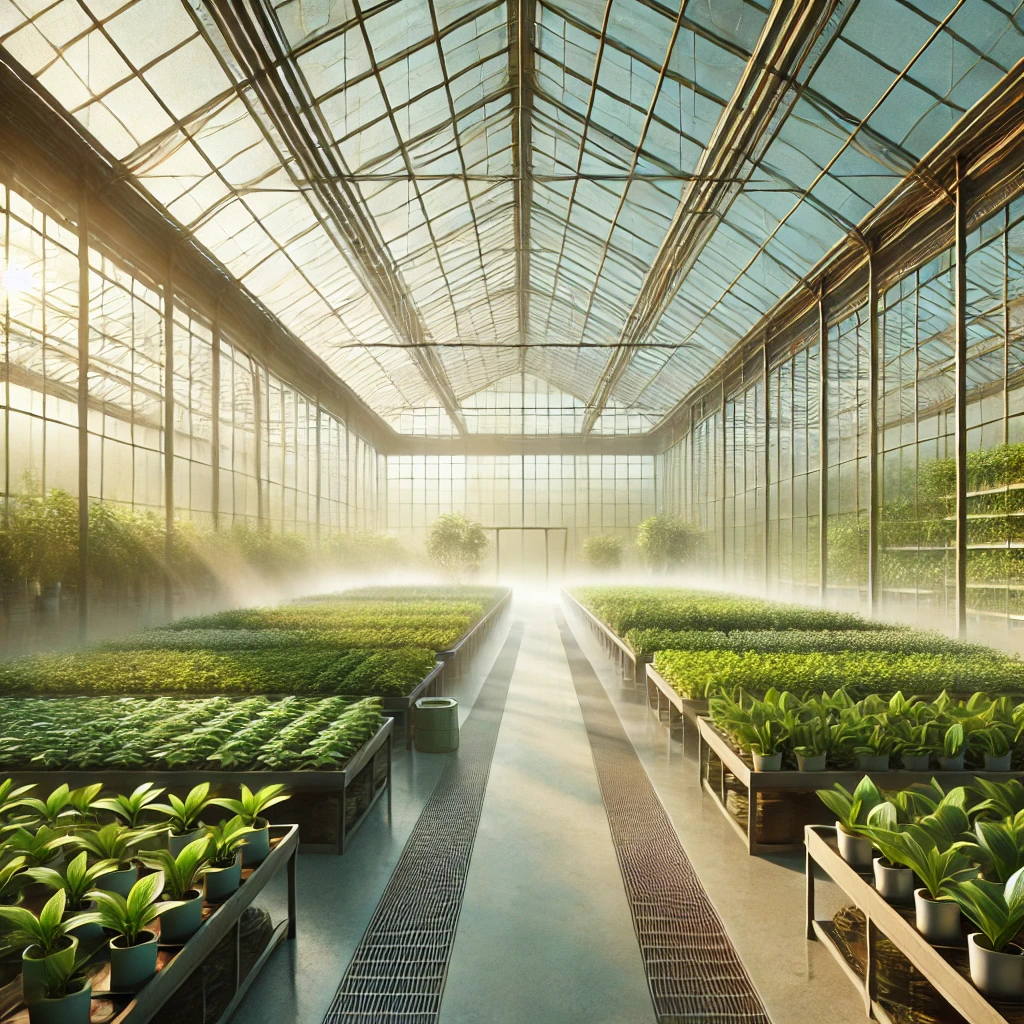
Table of Contents
Before diving into the specific benefits, let’s clarify what “greenhouse cleanliness” actually means. On the surface, cleaning might simply involve sweeping the floor, wiping down surfaces, and removing dead leaves. In reality, the process goes much deeper:
- Surface Maintenance
- Cleaning walls, windows, doors, and other structural elements to maximize light penetration and remove any buildup of dirt or algae.
- Tool and Equipment Hygiene
- Sterilizing gardening tools, storage shelves, and irrigation equipment to avoid carrying pathogens from one area to another.
- Debris Removal
- Discarding or composting plant debris, dead leaves, and other organic matter that can harbor pests or diseases.
- Monitoring and Prevention
- Inspecting plants for early signs of fungal growth, insect infestations, or disease, and taking immediate action to isolate or treat problems.
In other words, maintaining cleanliness is an ongoing, holistic approach to greenhouse care. It’s about creating an environment where pathogens have minimal opportunity to thrive, plants receive maximum support, and the structural integrity of the greenhouse remains intact for as long as possible.
If the phrase “why is it important to keep the greenhouse cleaning” has ever crossed your mind, remember that it’s not just about a cursory sweep—it’s about protecting the entire ecosystem within your greenhouse. The next sections illustrate precisely how cleanliness impacts everything from disease prevention to overall aesthetics.
10 Crucial Benefits of a Clean Greenhouse
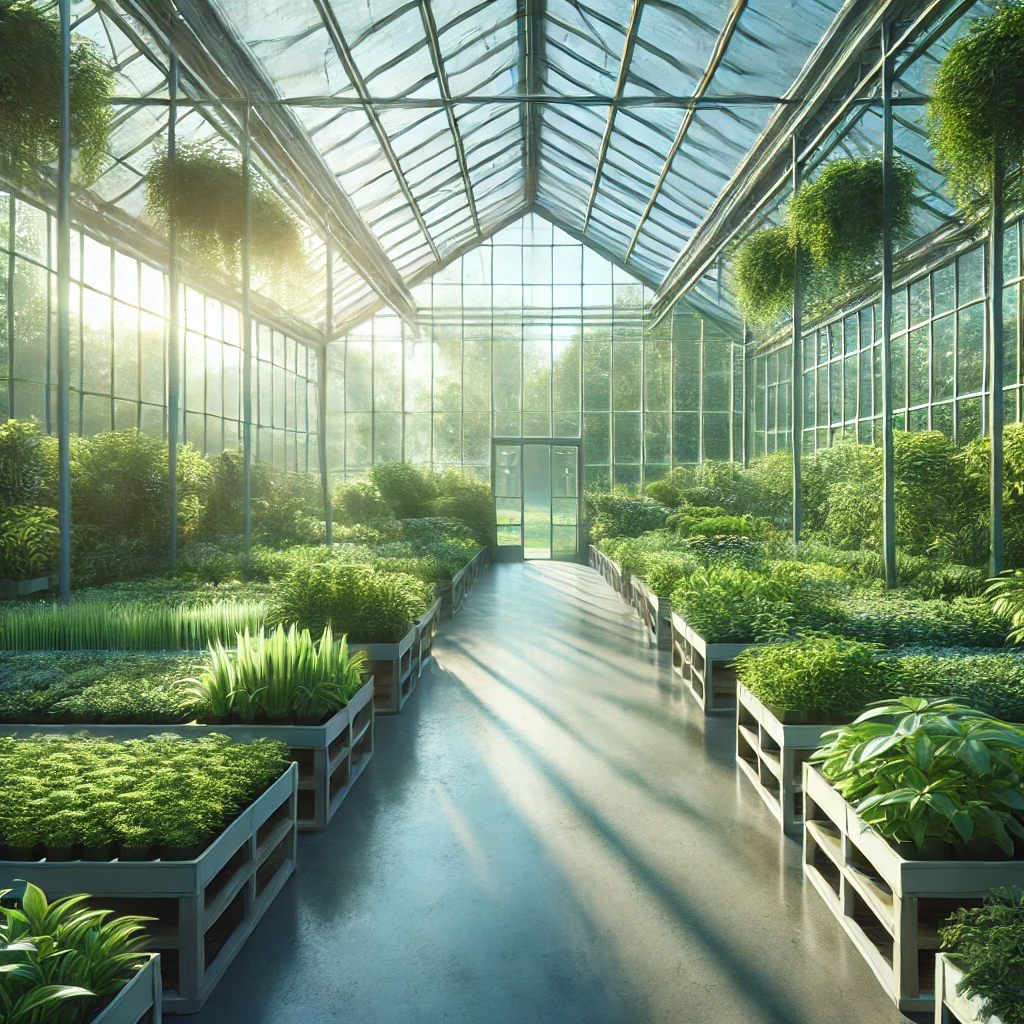
Prevention of Pests and Diseases
One of the most immediate benefits of keeping your greenhouse clean is the prevention of pests and diseases. Greenhouses, by design, create a warm, humid environment that can be a paradise for insects and fungi if not properly managed.
- Reduced Breeding Grounds
Soil spills, leaf litter, and hidden corners filled with debris all provide ideal breeding sites for insects such as aphids, spider mites, and fungus gnats. Regularly removing plant debris and sanitizing surfaces reduces these hidden havens, making it harder for pests to take hold. - Lower Risk of Fungal and Bacterial Infections
Damp, unventilated conditions are a surefire recipe for fungi and bacteria to multiply. Thorough cleaning, coupled with proper ventilation, lowers humidity in problem areas and helps prevent common greenhouse afflictions like powdery mildew or botrytis. - Early Detection and Intervention
A consistent cleaning routine usually involves inspecting the greenhouse’s nooks and crannies. During these inspections, you’re more likely to notice early signs of pest infestations or disease outbreaks, allowing for prompt intervention before the problem spreads.
Optimal Plant Growth Conditions
Cleanliness fosters an environment where plants can truly flourish.
- Consistent Temperature and Humidity
Over time, dust, mold, or algae buildup can affect how sunlight and heat distribute within a greenhouse. When you clean these surfaces, you ensure that sunlight isn’t obstructed and airflow isn’t compromised, helping to maintain more stable temperature and humidity levels. - Enhanced Photosynthesis
Dirty windows or greenhouse panels reduce the amount of sunlight that reaches your plants. By keeping the covering free of dirt and grime, you allow maximum light penetration, which directly influences photosynthesis efficiency. - Fewer Nutrient Distractions
Weeds and leftover plant matter can compete with your desired crops for nutrients, water, and light. Regular cleaning helps ensure that your plants get the resources they need without unnecessary competition.
Improved Light Penetration
Light is one of the cornerstones of plant growth. Even a slight reduction in available light can affect flowering, fruiting, and overall vigor.
- Cleaning Panels and Windows
Dirt, algae, and mineral deposits can accumulate on greenhouse panels, windows, or plastic coverings. By routinely washing these surfaces, you ensure that your plants receive the highest possible amount of natural sunlight. - Reduction in Shading Effects
Algae growth, even if it seems minimal, can create a shading effect that limits your plants’ exposure to direct sunlight. A thorough cleaning regimen keeps algae at bay and ensures the greenhouse interior remains well-lit. - Maximized Energy Efficiency
In greenhouses that rely on artificial lighting or heating, grime on surfaces can reduce the efficiency of these systems. Clean surfaces mean better energy usage and possibly lower operating costs.
Better Air Circulation
Adequate air circulation is pivotal for healthy plant growth and for preventing diseases.
- Clearing the Aisles
Overgrown pathways and clutter can impede airflow. By maintaining clean, open aisles, you allow fresh air to move freely throughout the greenhouse, reducing stagnant pockets where moisture can accumulate. - Healthier Microclimate
Good air circulation discourages the growth of molds and mildews by minimizing humidity in leaf canopies and soil surfaces. This directly contributes to fewer disease outbreaks and healthier plant growth overall. - Easier Temperature Regulation
When air can flow naturally, fans and ventilation systems perform more efficiently. This helps maintain a stable environment for your plants, which is critical for sensitive species.
Enhanced Crop Yield and Quality
Greenhouse gardening often aims to produce higher yields and better-quality crops than could be achieved outdoors. Cleanliness is a crucial part of achieving this goal.
- Consistent Growing Conditions
Clean environments reduce stress factors for plants, which can directly translate into higher yields. Plants that face fewer pest or fungal pressures have more energy to devote to growth and fruiting. - Reduced Crop Losses
A greenhouse can hold a sizable number of plants in a relatively small area. Diseases and pests can spread like wildfire in such close quarters, so preventing even one major outbreak can save a significant percentage of your harvest. - Improved Flavor and Appearance
Plants grown in a clean, well-maintained greenhouse often exhibit better color, texture, and flavor. This is especially beneficial if you plan to sell your produce or simply want to serve top-quality fruits and vegetables at home.
Reduced Spread of Contaminants
A greenhouse may seem like a closed system, but contaminants can easily find their way inside.
- Lower Risk of Cross-Contamination
Gardening tools, pots, and even your hands can transfer pests, bacteria, or fungal spores from one area to another. Regularly cleaning tools and work surfaces ensures that potential contaminants are eliminated before they spread. - Safe Seed Starting Environment
Starting seeds in a disinfected greenhouse helps ensure they develop in a pathogen-free space. This is particularly important for seedlings, which are more susceptible to damping-off diseases and other threats. - Protection for Vulnerable Plants
Some plant varieties are more prone to disease than others. By reducing overall contaminant levels in the greenhouse, you create a safer environment for these vulnerable species.
Longevity of Greenhouse Materials
A greenhouse can be a significant investment, whether made of glass, polycarbonate panels, or plastic sheeting. Keeping it clean helps extend the life of your investment.
- Preventing Corrosion and Damage
Excessive dirt, algae, or chemical residues can corrode metal frames and weaken plastic or wooden parts over time. Routine cleaning removes these harmful elements and preserves the greenhouse’s structural integrity. - Prolonged Use of Equipment
Properly sanitized shelving, irrigation systems, and other equipment last longer when they are kept free from rust, mineral buildup, or organic matter that can lead to degradation. - Better Return on Investment
The longer your greenhouse structure and its components remain functional, the greater your overall return on investment. Cleaning is a cost-effective way to protect and prolong the life of your greenhouse.
Efficiency in Water Usage
Water management is a critical aspect of greenhouse gardening, especially if you live in a region with water restrictions.
- Cleaner Irrigation Systems
Algae, mineral deposits, and debris can clog hoses, drip lines, or hydroponic systems. By regularly flushing and sanitizing these systems, you ensure that water is delivered efficiently and evenly to your plants. - Reduced Waste
When irrigation systems are clean and functioning properly, less water is wasted. This leads to more sustainable gardening practices and can also lower your operating costs over time. - Improved Plant Health
Clean water lines reduce the spread of waterborne pathogens. Healthy roots that receive a steady supply of clean water are the foundation of robust, productive plants.
Simplified Maintenance and Monitoring
A tidy greenhouse is far easier to manage than a cluttered one.
- Clear Sightlines
When floors are free from debris, it’s easier to spot potential problems like standing water, weed growth, or pest hotspots. You can quickly identify and address issues before they escalate. - Streamlined Routine
Regular cleaning creates a sense of order and predictability. Rather than scrambling to address emergencies, you’ll spend more time on proactive tasks that improve your overall gardening experience. - Easier Inventory Management
Knowing exactly where your tools, seeds, and supplies are stored saves time and reduces stress. A clean environment promotes better organization and ensures that everything is in its rightful place.
Aesthetics and Professional Appearance
Finally, one often-overlooked benefit of greenhouse cleanliness is simply that it looks great! Whether you’re a hobbyist or a commercial grower, a clean greenhouse conveys professionalism and care.
- Pride in Your Workspace
Gardening can be a passion and a form of self-expression. A clean, inviting greenhouse reflects the dedication you bring to your craft. - Inspiration and Motivation
Working in an orderly, visually appealing space can spark creativity and motivation. You’re more likely to spend quality time in a greenhouse that feels pleasant and uplifting. - Confidence for Guests and Customers
If you ever host tours, workshops, or sell plants from your greenhouse, a clean and organized environment reassures visitors of your high standards and expertise.
Best Practices for Greenhouse Cleaning
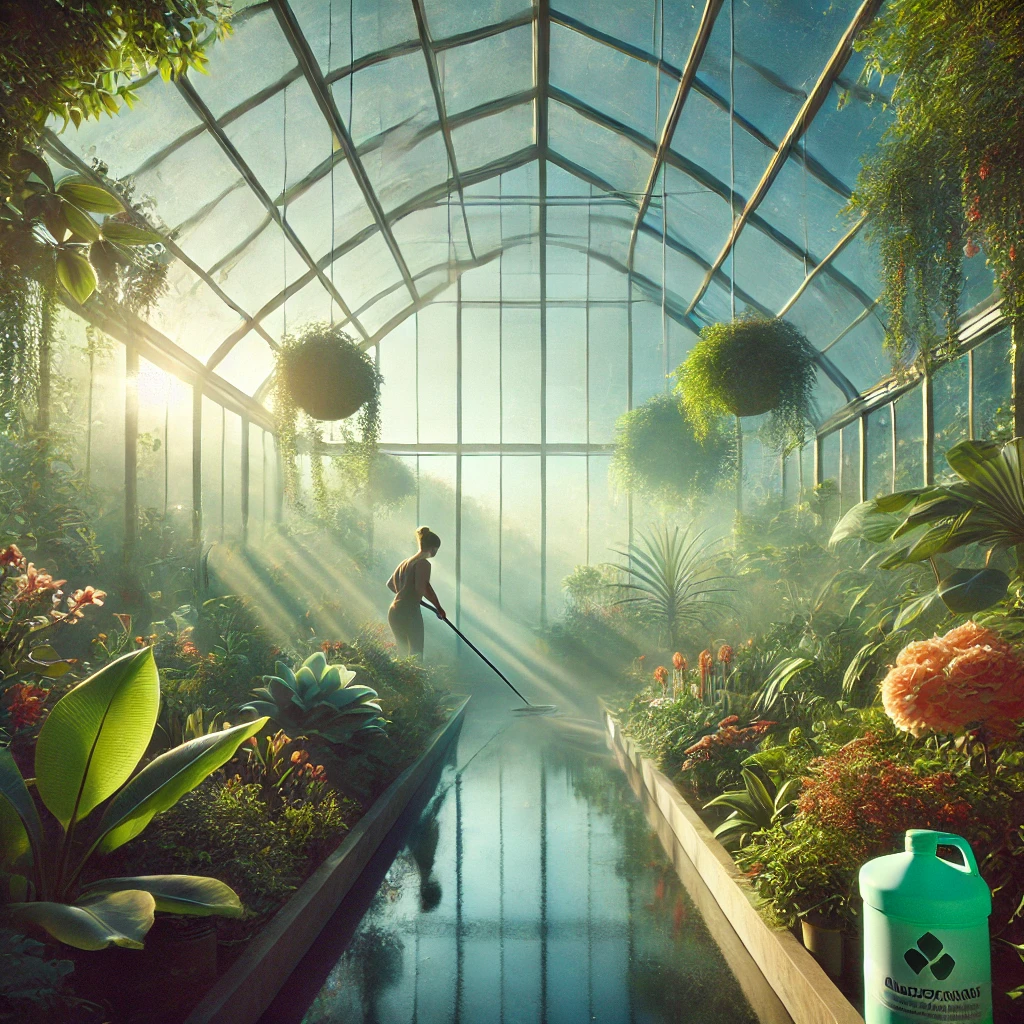
Now that we’ve explored why it is important to keep the greenhouse clean, let’s look at some proven best practices to integrate into your routine. Developing an effective cleaning regimen doesn’t need to be complicated, but it does require consistency.
- Establish a Cleaning Schedule
- Plan daily, weekly, and monthly tasks. For example, sweep floors and remove dead leaves daily; disinfect surfaces and tools weekly; deep-clean the entire greenhouse, including the walls and windows, every month or season.
- Use Appropriate Cleaning Products
- Opt for environmentally friendly solutions whenever possible. A mild detergent or specialized horticultural soap can often handle typical greenhouse grime. Avoid harsh chemicals that could harm delicate plant tissues or beneficial insects.
- Wear Protective Gear
- Depending on the cleaning products you use, protect yourself with gloves, goggles, or a mask. Even natural cleaning agents can irritate the skin or eyes if used in high concentrations.
- Clean Tools and Containers
- Don’t forget to sanitize pots, seed trays, and gardening tools. A diluted bleach solution or hydrogen peroxide can effectively kill pathogens. Make sure to rinse thoroughly and dry items before reusing them.
- Improve Ventilation
- Good airflow helps dry out surfaces faster, discouraging bacterial or fungal growth. Regularly check and clean vents, fans, and louvers to ensure there’s no debris blocking air movement.
- Inspect for Damage
- As you clean, look for cracks in glass, tears in plastic panels, or rust on metal frames. Address these issues promptly to prevent further deterioration.
- Record-Keeping
- Jot down any persistent problems you notice or recurring pest issues. Documenting your findings helps you adjust your cleaning strategies and stay one step ahead of future challenges.
By adhering to these best practices, you’ll cultivate a greenhouse environment that supports healthy, thriving plants.
Common Mistakes to Avoid
Even with the best of intentions, certain cleaning oversights can lead to avoidable problems. Here are some mistakes to watch out for and how to circumvent them.
- Using the Wrong Cleaning Agents
- Harsh chemical cleaners can leave residues detrimental to plants. Always read labels and choose products safe for horticultural use.
- Neglecting the Corners and Crevices
- Pests and fungi often hide in hard-to-reach areas. Make sure you thoroughly clean along edges, behind shelving, and anywhere debris can accumulate.
- Overlooking Tools and Equipment
- Many gardeners focus on cleaning surfaces but ignore the items used daily. Unsanitized tools can spread diseases from one plant to another.
- Cleaning Only When Problems Arise
- Reactive cleaning allows issues to escalate. Stick to a regular cleaning schedule to prevent pests and diseases from gaining a foothold in the first place.
- Not Removing Diseased Plants Immediately
- If you spot a heavily infested or diseased plant, remove it promptly. Quarantining or discarding it could save the rest of your greenhouse.
- Failing to Ventilate After Cleaning
- Damp conditions after washing surfaces can create a breeding ground for mold. Keep fans on and vents open until everything is dry.
- Ignoring Personal Hygiene
- Always wash your hands thoroughly or wear gloves when moving between different greenhouse areas or after handling diseased plants. This small step can prevent cross-contamination.
Maintaining a greenhouse involves more than just cleaning—it’s about ongoing care, plant selection, and even the right tools and technologies. For additional guidance on greenhouse maintenance, watering schedules, and eco-friendly gardening tips, feel free to explore our resources at Gardenloom.com.
At Gardenloom, we provide comprehensive articles and product recommendations tailored for every level of gardener. Whether you’re curious about best soil mixes or the newest greenhouse accessories, you’ll find up-to-date information to make your greenhouse thrive.
Frequently Asked Questions (FAQs)
1. How often should I clean my greenhouse?
Answer: It depends on your greenhouse’s size, plant variety, and local conditions, but a general guideline is:
- Daily/Weekly: Remove fallen leaves, dispose of dead plants, and sweep the floor.
- Monthly/Seasonally: Wash windows or panels, disinfect shelves and tools, and inspect the structure for damage.
By maintaining a consistent schedule, you can proactively address small issues before they become bigger problems.
2. Can I use eco-friendly cleaning products in my greenhouse?
Answer: Absolutely. In fact, using mild, biodegradable detergents or natural solutions like vinegar and water is often recommended. These products are generally safer for both your plants and the environment, helping ensure that chemical residue does not linger on surfaces or harm beneficial insects.
3. Is there such a thing as over-cleaning the greenhouse?
Answer: While rigorous cleaning is beneficial, it’s important to balance cleanliness with a healthy microbial environment for your plants. Sterilizing every surface too frequently can disrupt beneficial microbes in the soil. Aim for removing harmful pests and pathogens without wiping out all natural, plant-friendly microbes that help create a balanced ecosystem.
4. Do I need to remove all my plants before cleaning?
Answer: Not always. For light, routine cleaning—like wiping down windows or sweeping the floor—keeping your plants in place is fine. If you’re doing a deep clean with disinfectants, it’s safer to move plants outdoors or to another sheltered area. This approach prevents potential chemical residue from landing on leaves or in the soil.
5. How does greenhouse cleanliness affect pests and diseases?
Answer: A clean, well-ventilated greenhouse has fewer hiding spots for pests and significantly lowers disease risks. Regularly removing debris, sanitizing tools, and wiping down surfaces create a less hospitable environment for insects and pathogens, which is the core reason why it is important to keep the greenhouse clean. Early detection of problems also becomes easier when the space is tidy and organized.
6. What if my greenhouse has visible mold or algae on the panels?
Answer: Mold, mildew, and algae growth are indicators that your greenhouse might have high humidity and insufficient airflow.
- Immediate Action: Wipe down or wash affected surfaces with a mild cleaning solution.
- Adjust Ventilation: Improve airflow by checking vents, fans, or louvers, ensuring they’re unblocked and operational.
- Preventive Steps: Keep surfaces dry, promptly remove organic debris, and monitor humidity levels to discourage regrowth.
7. Where can I learn more about greenhouse cleaning best practices?
Answer: For more in-depth guidance on why it is important to keep the greenhouse cleaning a top priority—as well as tips on product recommendations and sustainable gardening methods—visit Gardenloom.com. You’ll find articles, checklists, and community discussions that offer support for greenhouse enthusiasts at all skill levels.
Conclusion and Call to Action
Greenhouse gardening is a rewarding endeavor, offering opportunities to grow exotic plants, extend growing seasons, and relish the beauty of nature in a controlled setting. However, the vitality of your greenhouse relies heavily on why it is important to keep the greenhouse clean. We’ve covered ten key benefits—from pest prevention and better yields to efficient water usage and extended material lifespan—that all hinge on maintaining a clean, organized environment.
If you’ve ever asked yourself, “why is it important to keep the greenhouse cleaning a priority?” the answer lies in the immediate and long-term advantages: fewer pests, fewer diseases, healthier plants, and a more efficient gardening process overall. By integrating best practices, avoiding common pitfalls, and diligently sticking to a schedule, you can transform your greenhouse into a sanctuary that supports vibrant plant life for years to come.
Your Next Steps
- Start a Cleaning Schedule: Outline daily, weekly, and monthly tasks in a gardening journal or smartphone calendar. Consistency is key.
- Gather the Right Tools: Stock up on eco-friendly cleaning solutions, soft-bristle brushes, disinfectants, and protective gear.
- Monitor and Adjust: Regularly evaluate what’s working and what’s not. Adapt your cleaning regimen to address any recurring issues.
- Explore Additional Resources: Visit Gardenloom.com for more tips on greenhouse maintenance, plant care, and product recommendations.
A well-maintained greenhouse is more than just a place for growing plants—it’s a reflection of your dedication to cultivating beauty and abundance. By giving cleanliness the attention it deserves, you’ll create an environment where both you and your plants can thrive. Here’s to enjoying the benefits of a spotless, flourishing greenhouse for many seasons to come!

